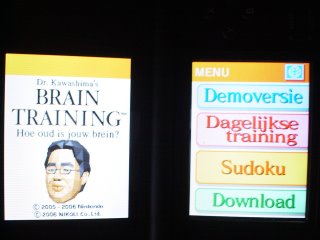
When: March 13—18, 2007
Where: Salzburg, Austria
Title: New Information Networks: Challenges and Opportunities for Business, Governments, and Media".
Salzburg Seminar: The Salzburg Seminar is an institution focused on global change—a place where innovative ideas lead to practical solutions. As an independent, neutral forum, the Salzburg Seminar engages current and future leaders in candid discussion to inspire new thinking and to pioneer strategies for change.
The Program: The first years of the new millennium have seen a dramatic change in the production of information and the organization of the digital environment. The rapid emergence of peer production, social networking, and powerful non-market actors via the Internet and other technologies is reshaping not only the flow of commerce but the means by which information, knowledge, and culture are created and shared between individuals, groups, and societies. These new methods of production and social interaction are forcing business, government, and the media to evolve quickly, with mixed levels of success, and presenting major challenges to the predominant business and regulatory models enshrined during the last half of the 20th century.
At the heart of these changes lies a fundamental rewiring of the social infrastructure. Social networking and peer production are empowering individuals to create, distribute, share, and consume information in a way that circumvents pre-existing business, advertising, and media models, and in so doing, are creating new opportunities for social, political, and economic development. This session will examine both the challenges and opportunities confronting government, business, and media with specific emphasis on the underlying mechanisms and fundamental changes taking place. The decisions made by government, business, and media in the coming decade will have a monumental effect on the social, political, and economic development of the next generation. This session will thus seek to contribute to that development by framing the fundamental issues, outlining the stakes, and informing the decisionmaking process.
The Salzburg Seminar is accepting registration from talented professionals working in journalism, business, production, regulatory industries, academia, research institutions, and governmental and civil society organizations.
Speakers: Faculty members who will lead the process and give presentations include:
Viktor Mayer-Schönberger (Co-Chair) - Associate Professor of Public Policy, Harvard University, Cambridge, MA; Founder, Ikarus Software; Co-chair, The Rueschlikon Conference on Information Policy
Yochai Benkler - Professor of Law, Yale Law School, New Haven, Connecticut; Author, The Wealth of Networks: How Social Production Transforms Markets and Freedom
Kenneth Cukier - Technology Correspondent, The Economist Newspaper Ltd., London
Jeannette Hofman - Senior Researcher on Internet Governance and Technology Policy, Departments of Innovation and Organization and New Forms of Governance, Berlin Social Sciences Institute
Christoph Mohn - CEO, Lycos Europe GmbH, Gütersloh; Member of the Supervisory Board, Bertelsmann AG
Jo Twist - Senior Research Fellow, Digital Society and Media, The Institute for Public Policy Research (IPPR), London
Janus Friis - Co-Founder and Director of Innovation and Business Strategy, Skype, London (invited)
Reid Hoffmann - CEO and Co-founder, LinkedIn Corporation, Palo Alto, California (invited)
Participants: The Seminar seeks mid-career specialists and leaders who can benefit from global exposure and who currently are in a position to effect systemic and strategic change.
Topics to be addressed include:
• On The Horizon of Media, Business, Entertainment, and Creativity: P2P Production and Social Networks—Transforming Innovation, Business, and Content
• Responding to The Information Transformation: Business, Media, and Society
• Regulation and the "Revolution": Managing New Markets, Incentivizing Innovation, and Maintaining Openness
• Digital Interactivity and New Modes of Participation: Governance, Engagement, and Representation
• Making Sense of The "Revolution": What it means, where it is going
• Media, Multimedia, and Tomorrow’s Content: New Approaches and New Markets for News and Entertainment – Where is the Industry Heading?
For further information, please contact the Program Director this session, Mr. Benjamin Glahn at: bglahn@salzburgseminar.org



















